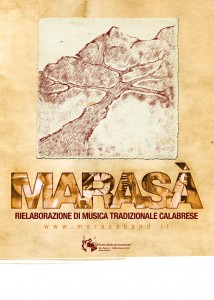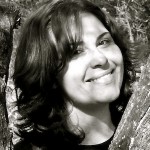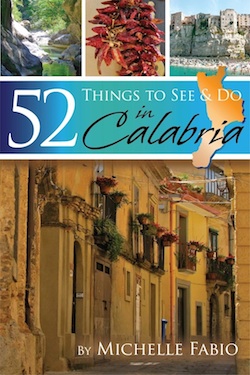Archive for 2009
Travellers Calabria Contest: Q and A with Travel Writer Lara Dunston Part 3 of 5
 Welcome to Day 3 of our Q and A with Travel Writer Lara Dunston! Previous installments:
Welcome to Day 3 of our Q and A with Travel Writer Lara Dunston! Previous installments:
Remember that I’m giving away FIVE copies of Lara and Terry Carter’s new guidebook, Travellers Calabria. See details here, but essentially you can comment every day this week for a chance to win Lara and Terry’s book.
And don’t forget to go back and comment on Sunday’s post for a chance to win a Calabrian CD by the group Marasà.
Now, my interview with Lara continues (all photos provided by Lara and Terry). Are you paying attention aspiring travel writers?
5. Turning to your writing career, how did you get into travel writing?
I actually started out studying film production and cinema studies in Sydney, Australia, in the mid- to late-80s, and worked in media relations/PR to put myself through university. I made films, wrote film reviews for many years, and taught film – a combination of industry courses and film appreciation type courses for adult learners.
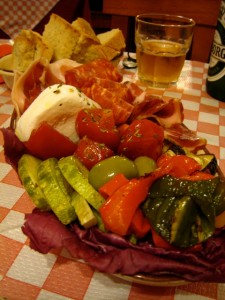 My greatest passions had always been film and travel, and after years of making short films, and then two years making my first feature film (which almost killed me), I started to re-think what I wanted to do.
My greatest passions had always been film and travel, and after years of making short films, and then two years making my first feature film (which almost killed me), I started to re-think what I wanted to do.
I left my job, focused on freelancing, writing about film and teaching film mainly, but I also did a travel writing and photography course, and then a couple of tiny travel pieces for a publishing company Terry worked for, which at the time was Australia’s largest publisher of maps, street directories, caravan and camping books. They offered us our first guidebook, the Sydneyside guide, which was Terry’s idea, and it became part of their compact street directories and still exists actually.
Yet despite that fantastic opportunity, I didn’t really get into travel writing then… I wrote a teen fiction novel, continued to write film reviews, and I stuck with film for a long time after.
I did a full-time Masters degree which took me to South America for the second year of the program to research Latin American cinema (my itinerary was dictated by the film festival calendar) and then returned to Australia to write my thesis, saw a job teaching media studies, film and writing at a women’s university in Abu Dhabi, applied, got it, and we moved to the UAE in 1998.
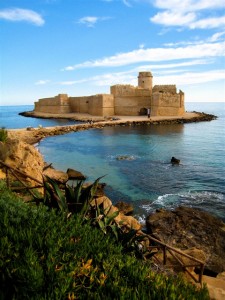 It was while we were there that we accidentally fell into travel writing again – we’d used a couple of dreadful Lonely Planet books; they were current editions but they were terribly out of date, and they really impacted the trip we did and the choices we made. I was complaining about them to my friend’s sister who was in the UAE on holidays who worked for Lonely Planet.
It was while we were there that we accidentally fell into travel writing again – we’d used a couple of dreadful Lonely Planet books; they were current editions but they were terribly out of date, and they really impacted the trip we did and the choices we made. I was complaining about them to my friend’s sister who was in the UAE on holidays who worked for Lonely Planet.
She suggested we let LP know and forward in some notes and get some free books. So I did and they asked us if we’d be interested in writing for them. We wrote a sample, got approved, was offered the Dubai guide to update, then Syria and Lebanon, and that’s how it all started…
The first book we did was during our summer vacation (I used to get two months off every summer, and a couple of weeks for winter, plus lots of Islamic holidays!) and I was considering leaving my job at the time, so we took on more writing work. But then out of the blue came a promotion to run the media department at the women’s campus for the same institution in Dubai. I’d been teaching at a tertiary level for 5 years then, so it was a great opportunity, so I took it.
So Terry, who’d been working as a multimedia designer suddenly found himself virtually working as a full-time travel writer, and he did the bulk of quite a number of books with me just writing chapters on shopping and entertainment, some of the sights, and other fun bits and pieces, as well as editing for him.
Two and a half years later I was ready to leave my job and – as we had a lot of writing offers, a whole year’s worth of books in fact – we decided that I would quit my job, we would put all our worldly possessions in storage in Dubai, and we would travel for a year as an experiment to see if we could live out of our suitcases, make a success of travel writing, and survive as a couple, and then we’d settle down and write a book about the experience. The problem was we kept getting all these enticing offers to travel to interesting places, so three and a half year’s later, we’re still on the road…
6. What are your favorite and least favorite parts of the job?
The research is definitely my favorite bit. It’s exhausting, because you work seven days a week and generally work 14 hour days on a good day, often longer, especially if you’re doing a city guide and you have to stay up late to check out bars and clubs then get up early to check out markets, then museums and shops, then restaurants… it doesn’t stop.
But I love being on the road and travelling around and exploring a country or region, and if it’s one you know but you don’t know intimately, then that chance to fully discover it and become familiar with it and make friends with locals is just so rewarding.
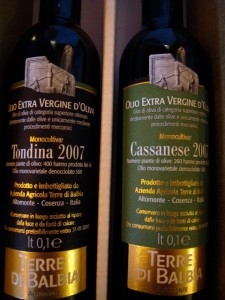 When you’ve done that so many times in so many countries – we’ve travelled to 60 countries now – you really become so attached to places that they all feel like your second homes, and you do feel like a citizen of the world. I love that feeling.
When you’ve done that so many times in so many countries – we’ve travelled to 60 countries now – you really become so attached to places that they all feel like your second homes, and you do feel like a citizen of the world. I love that feeling.
A downside, however, is that unlike an expat of one country, who might keep up with the news in their new home as well as their country of birth, I find myself – no matter where we are – constantly checking up on what’s going on in Italy, Syria, Lebanon, Argentina, Thailand, the UAE, and of course, my place of birth Australia. Sometimes I feel like I’m suffering from global information overload!
I also love the writing, although that stage is completely different to the research, because when you’re researching you’re constantly mobile, whereas when you’re writing you’re sedentary, chained to a desk for months and you’re working the same kind of hours seven days a week.
But when you’re writing – whether it’s a magazine story or a guidebook, you’re re-living the experience, and you’re trying to write in such a way that inspires readers to go there, while honestly evoking the place for them.
It can be a challenge because nobody wants to write negatively about anything (our job is to sell destinations and therefore help sell guidebooks or magazines after all) but at the same time nowhere is perfect and you don’t want people to build expectations and then be disappointed, so we’re always honest in our writing.
My least favorite part of the job is the editing process. That’s the only part of the job that isn’t always enjoyable. It’s totally dependent on who you’re working with. There are some editors I absolutely love working with and some publishing companies seem to have better editors than others, perhaps because they pay them more.
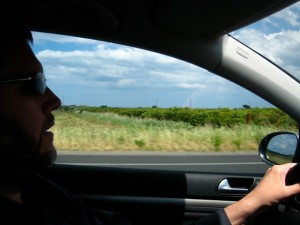 The good editors are intelligent editors who ask smart questions – they tend to be widely travelled and yet they understand the brand of the book and the needs of a reader and what they want from the text, but they also understand the needs of the writer and appreciate when they might be on the road and can’t access the internet, that they might be rocking up to a hotel at 9pm, eating at 10pm, then crashing, only to have to get up at 6am and hit the road again, so they know you might not be able to turn text or enquiries around fast.
The good editors are intelligent editors who ask smart questions – they tend to be widely travelled and yet they understand the brand of the book and the needs of a reader and what they want from the text, but they also understand the needs of the writer and appreciate when they might be on the road and can’t access the internet, that they might be rocking up to a hotel at 9pm, eating at 10pm, then crashing, only to have to get up at 6am and hit the road again, so they know you might not be able to turn text or enquiries around fast.
They also know that you’ve slaved away doing research on the road for this book for months – and if you actually divided the fee by the number of hours actually worked, it doesn’t seem so generous after all, that we’ve actually worked for a pittance – and some editors respect this and are more sensitive about the questions they ask.
Fortunately we’ve worked with a lot of great editors, especially at DK, also AA Publishing, and some Lonely Planet editors were great.
But we’ve also worked with some bad editors. The worst kind of editor is the one that is ignorant about the place, hasn’t travelled much, and asks pointless questions. Some seem to be justifying their jobs by making changes for the sake of change – it can be especially frustrating when they insert errors or change the text so that it’s wrong.
I’m not so concerned about my own writing, I got over being precious about my writing a long time ago – but I ask myself what makes the most sense to the reader, what’s going to help the reader out most, and if I think it still makes sense to the reader, I let the change slide, if it doesn’t, then I’ll argue it.
But once you do that, things always become unpleasant, the writer is perceived as being a pain-in-the-butt, and you probably won’t work with that editor, or get a job from the commissioning editor again.
Thanks so much for this inside look into life as a travel writer, Lara. Readers, stay tuned for more Q and A tomorrow!
Be sure to leave your comment and tweet or post to Facebook to maximize your chances of winning a copy of Travellers Calabria! See contest details here.
Travellers Calabria Contest: Q and A with Travel Writer Lara Dunston Part 2 of 5
 Welcome to Day 2 of our Q and A with Travel Writer Lara Dunston! See the first part of the interview here.
Welcome to Day 2 of our Q and A with Travel Writer Lara Dunston! See the first part of the interview here.
Remember that I’m giving away FIVE copies of Lara and Terry Carter’s new guidebook, Travellers Calabria. See details here, but essentially you can comment every day this week for a chance to win Lara and Terry’s book.
And don’t forget to go back and comment on Sunday’s post for a chance to win a Calabrian CD by the group Marasà.
Now, my interview with Lara continues (all photos provided by Lara and Terry):
3. Obviously you’re an expert traveler. Tell us a bit about how you pack, e.g., how long does it take, what are the “must” pack items?
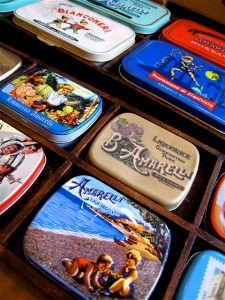 I’m actually the last person to ask about packing because while I do apply good techniques – rolling clothes tightly, separating clothes onto one side of my Samsonite and everything else (shoes, toiletries, cosmetics, books etc) on to the other – I am not travelling for holidays so our needs are very different to someone going to Paris for a week or backpacking around Europe for a few months.
I’m actually the last person to ask about packing because while I do apply good techniques – rolling clothes tightly, separating clothes onto one side of my Samsonite and everything else (shoes, toiletries, cosmetics, books etc) on to the other – I am not travelling for holidays so our needs are very different to someone going to Paris for a week or backpacking around Europe for a few months.
Terry and I quite literally live out of our suitcases – we’ve been on the road for 3.5 years now, bouncing around the planet from one commission to another. So our bags are our homes and we travel with everything we need to be able to set up and work wherever we are.
Therefore we have a lot of technology, laptops, cameras, collections of adaptors and cables, and Terry has dozens of drives with his photos on them. I also carry around things the average traveler wouldn’t, like a collection of DVDs of favorite movies and TV shows that we watch during down time when we want to stay in of an evening and pretend to be normal.
I’m also a last minute packer. I never allow more than a few hours to pack. I’ve done it so many times, that there’s really nothing to think about. The only time I might pack 24 hours before, and then re-pack at the last minute (discarding non-essentials), is if we’ve been in one place for a while and have gathered lots of stuff, especially research materials.
But we have an attitude that if we forget something we just buy it, and if we have too much gear we send it to my sister’s or aunt and uncle’s, who both have big houses and they store it for us.
4. I’m a firm believer that voracious reading greatly benefits writers; who are your favorite travel writers?
I totally agree with you but as a busy working travel writer, I actually have little time to read anything that doesn’t relate to the place I’m researching. I used to read far more travel literature before I became a travel writer. Then my favorite writers were people like Paul Theroux, Robert Kaplan, Freya Stark, and Jan Morris.
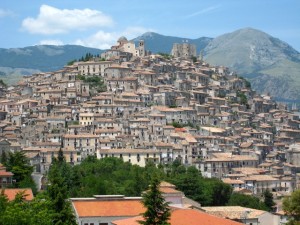 Now, what we usually do is buy literature by writers who have written about the places we’re travelling in, so for instance, we read Laurence Durrell’s “Bitter Lemons of Cyprus” while in Cyprus last year. Or we pick up stuff by local writers.
Now, what we usually do is buy literature by writers who have written about the places we’re travelling in, so for instance, we read Laurence Durrell’s “Bitter Lemons of Cyprus” while in Cyprus last year. Or we pick up stuff by local writers.
We’re in Mallorca at the moment, so I have George Sand’s “Winter in Majorca” by my bedside, and I’m trying to get hold of the books written by the children of Robert Graves, the English poet and novelist who lived here for much of his life, who still live in Mallorca apparently.
One book that I always travel with, however, is Alain de Botton’s “Art of Travel” because I’m really interested in why people travel, their motivations, inspirations and expectations, and what they get out of travel (I actually started a PhD on the connections between film and travel many years ago) and so I dip into that book every now and again and it constantly helps me to think about travel in new ways and deepens my understanding about what we do.
More *fabulous* answers! Thanks so much Lara!
Come back tomorrow for more with Lara as she shares what life as a travel writer is *really* like–you aspiring travel writers will especially appreciate her thoughts!
Be sure to leave your comment and tweet or post to Facebook to maximize your chances of winning a copy of Travellers Calabria! See contest details here.
Travellers Calabria Contest: Q and A with Travel Writer Lara Dunston
 Welcome to the first day of our Q and A with Travel Writer Lara Dunston!
Welcome to the first day of our Q and A with Travel Writer Lara Dunston!
Remember that I’m giving away FIVE copies of Lara and Terry Carter‘s new guidebook, Travellers Calabria. See details here, but essentially you can comment every day this week for a chance to win Lara and Terry’s book.
And don’t forget to go back and comment on yesterday’s post for a chance to win a Calabrian CD by the group Marasà.
Now, my first two questions to Lara (all photos provided by Lara and Terry):
1. OK, let’s start close to home. What was your favorite part about writing the Calabrian guidebook?
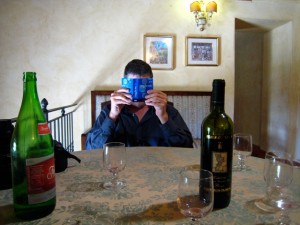 The research trip around Calabria was fantastic. I write with my husband Terry Carter [pictured right, learning Italian after a bit of wine, always the best time to learn], who is a travel photographer and we did a month-long road trip around the region for this book and just loved it! Terry was shooting photos for the book, and when he’s doing photography for a book we tend to meet more people, because we’re not undercover as we might be if we were just writing.
The research trip around Calabria was fantastic. I write with my husband Terry Carter [pictured right, learning Italian after a bit of wine, always the best time to learn], who is a travel photographer and we did a month-long road trip around the region for this book and just loved it! Terry was shooting photos for the book, and when he’s doing photography for a book we tend to meet more people, because we’re not undercover as we might be if we were just writing.
The research trip is the best part of any book commission for me. The actual writing can be monotonous although it can be wonderful in the sense that we re-visit the places in our imagination as we write about them, and re-live the trip in a way.
But we’re tied to desks writing for 15-18 hours a day seven days a week for a month or two, which can get hard to handle – and for Terry, he’s also selecting photos and photo-editing. When we’re doing the research, we get to drive through spectacular landscapes (especially in the case of Calabria), explore charming towns (ditto!), learn about the history, culture and society, and get to meet fascinating people along the way.
Before we did the Calabria book, we’d spent a lot of time in Italy over the years, travelled all over, and had driven all over Sicily, but the furthest south we’d ever been on the mainland was the Amalfi.
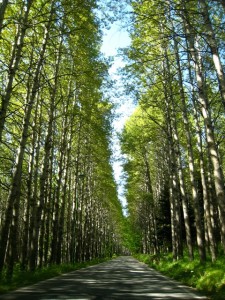 Calabria is very different to the rest of Italy and we just loved it. We thoroughly enjoyed the countryside, especially the tortuous drives through spectacular mountain scenery.
Calabria is very different to the rest of Italy and we just loved it. We thoroughly enjoyed the countryside, especially the tortuous drives through spectacular mountain scenery.
We were there in spring and the wildflowers were beautiful, everything was lush and green, the air was fragrant – we loved the Sila and Aspromonte National Park [left] especially, and we adored all those charming hilltop towns that seem to tumble down mountainsides or are perched precariously atop cliffs, like Tropea [photo of beach below], Pizzo, Morano Calabro and Amantea. They’re all so enchanting…
We particularly enjoyed the food – the spices, the peperoncino, all the fresh seafood –we had some incredible gastronomic experiences that we didn’t expect to have. There was one particularly memorable meal near Camigliatello at La Tavernetta where we had a degustation menu that revolved around mushrooms that had just been picked. My god! I know a bit about food and have eaten in thousands of restaurants obviously, but I’d never tasted mushrooms this good before or realized they could be done in so many ways.
 The company was pretty special that night too – we were taken to the restaurant by a Baron and Baroness – and our accommodation was equally memorable – their hunting lodge, Torre Camigliati, which is now a B&B.
The company was pretty special that night too – we were taken to the restaurant by a Baron and Baroness – and our accommodation was equally memorable – their hunting lodge, Torre Camigliati, which is now a B&B.
When we were in Amantea we stayed at the splendid Palazzo delle Clarisse [right] (more like a castle than a palace!) – in a suite that Queens had stayed in! – and we savored some of the most creative and refined cuisine we’ve had in Italy at their restaurant.
That night we also dined with the owner, a fascinating and charming guy, a former Italian politician who now writes magical realist novels, and his friend, who produces some of Italy’s finest award-winning olive oil.
We had another stupendous meal at Il Fiore del Cappero in Reggio Calabria – I think that was the same day I zipped around Reggio on the back of a Vespa doing inspections of B&Bs! Don’t ask… so sometimes the pleasure of research is as much about the people you meet along the way as it is the places you go to.
2. You’ve been all around the world, so please share: what is your favorite travel destination and why?
There are so many wonderful places in this world that I find it impossible to pick one. I don’t have one favorite place. Nor does Terry. I guess if we did, we’d be living in one place instead of living out of our suitcases and travelling the world like gypsies!
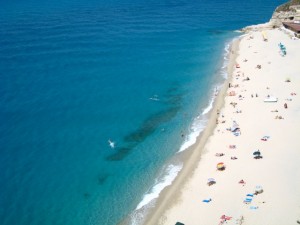 Rather, I have different destinations for different moods or seasons or activities… I love springtime anywhere in the Mediterranean or in the Middle East, winter anywhere in the Alps but particularly Northern Italy and Switzerland and Austria, while I also love winter in the outback in Australia (nothing compares to the clarity of light).
Rather, I have different destinations for different moods or seasons or activities… I love springtime anywhere in the Mediterranean or in the Middle East, winter anywhere in the Alps but particularly Northern Italy and Switzerland and Austria, while I also love winter in the outback in Australia (nothing compares to the clarity of light).
Summer in San Sebastian, Spain, is pretty special, also Scandinavia, and anywhere in Italy – as crowded as it can get, there’s a real buzz about summer – especially in Calabria where everyone gets out in the evenings and does the passeggiata.
And I’m happy in Thailand any time, ditto re: South America.
Wow, what a fabulous start to the Q and A, Lara! Thanks!
Be sure to leave your comment and tweet or post to Facebook to maximize your chances of winning a copy of Travellers Calabria! See contest details here.
Kicking Off Travellers Calabria Week with Mimmo’s Music
Starting today and continuing until Friday, July 10, we’re celebrating the fact that lil’ ole Calabria *finally* has a fabulous guidebook dedicated to her:

Travellers Calabria by Lara Dunston and Terry Carter
All this week, Lara will be here answering my questions and sharing Terry‘s and her gorgeous photos of bella Calabria.
If you want to start getting acquainted with this dynamic duo now:
- Lara describes herself as a “perpetual globetrotter (60+countries) travel writer (40+books, 100s stories for world’s best publishers) living out of a suitcase since Jan 06” on Twitter (follow @laradunston) and blogs at Cool Travel Guide.
- Terry is “a travel and editorial photographer and travel writer. He literally lives out of a suitcase accompanied by a couple of bags of photography gear.” Follow him @terencecarter on Twitter and read his blog at Wide angles, wine and wanderlust.
And you don’t want to miss a single day of the Q and A with Travel Writer Lara Dunston. Why not?
Because I will be giving away a copy of Travellers Calabria every day–that’s FIVE copies total.
Comment once on each post from Monday to Friday to be entered in the drawings; I will pick one winner from Monday’s comments, one from Tuesday’s, etc., and I will announce all the winners next Saturday. All comments must be entered by midnight CET on Friday, July 10.
For extra entries (one per day per person except as below), tweet or post about the contest on Facebook with a link to any one of the contest posts (although preferably this one since it will be the only one with all the rules) AND EMAIL ME TO LET ME KNOW at:
michellefabio5 (at) gmail (dot) com
I will enter your extra entry in the day in which you tweet/post appears, except for today; any tweets/posts today will be entered in the drawing that ends up with the fewest number of entries–which means you can get six extra entries if you tweet/post today and every day of the contest.
In the event you’re lucky enough to win two (or more) copies, you will have the choice of accepting all your winnings or having me pick another winner.
Any questions–feel free to ask!
And what’s a party without music?
Kicking things off is a new CD by my friend Mimmo’s band, Marasà. You may remember Mimmo from our New Year’s Eve celebration and discussion of the chitarra battente.
Well his band is back with their second CD, Sentéri:
This is Calabrese folk music with a twist–a famous Italian rock star (who happens to have a house in Badolato Superiore) even guests on the CD.
The songs are sung in local dialect, but the liner notes have the lyrics in both Italian and Calabrese; if you’re interested in a copy of the lyrics, let me know, and I’ll send you the PDF.
Curious as to what it sounds like?
Head over to Offma, where you can also buy your own copy for 12 euros, or to Marasà’s MySpace page, where you can listen to samples and also, for those of you who will be in southern Italy over next couple months, where you can catch them live in concert–they’re kicking the summer tour off tonight right here in Badolato Superiore. Lucky us!
And, aw heck, since I’m feeling generous, I’ll even give away a copy of the new Marasà CD to a lucky commenter. To be eligible, comment on THIS post by midnight CET on Friday, July 10.
Viva la Calabria!
Love Thursday: William’s Orgasmic View Lives On
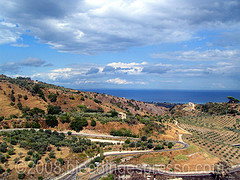 William the Englishman (or l’Inglese as he was called in the village) had a house in Badolato with an “orgasmic view” of the Ionian Sea, as he called it. He came to stay here every year from April to October.
William the Englishman (or l’Inglese as he was called in the village) had a house in Badolato with an “orgasmic view” of the Ionian Sea, as he called it. He came to stay here every year from April to October.
*
During the early years (we both arrived in the village around 2003), we were the only two English speakers, so we’d meet for cappuccino in the piazza before William took the bus down to the beach. Along the way he’d stop to chat with just about everyone, trying out his ever-improving Italian, helped by the years he had spent as a bar owner in Spain.
William always joked that everyone knew him, but he most certainly didn’t know everyone. The young children on the bus especially enjoyed him as they relished the chance to practice their school-learned English.
I always felt like a surrogate daughter for William, whose own precious girl was about my age back in London. When William’s house needed “a woman’s touch” as he put it, I helped him pick out dishes and other little accents. Every couple weeks, I’d set up his cell phone ring tones, phonebook, and other settings he’d somehow managed to change. Paolo and I even had him over for a very impromptu Easter dinner one year.
William called me “the Unamerican American” because I had what he considered a rare curiosity about the world and desire to live abroad–Unamerican for an American, according to William. And he never did quite understand how I was able to work via Internet in this mountaintop village and actually make a living; I must have tried to explain it a hundred times.
Lest you think he was anti-American, though, William always rang me on Thanksgiving and was always sure to pay for my cappuccino on the 4th of July.
*
Soon after William bought his house here in Badolato, he was the victim of a hit-and-run back in London, and although he survived, he did so just barely. He suddenly had a long physical and emotional road to recovery ahead of him–not made any easier by all the steep hills and steps in Badolato.
And so, William considered selling his beloved casa with its “orgasmic view,” but I got the feeling that was never going to happen. He just loved his piccolo paradiso (little paradise), as he called it, too much.
*
In 2008, William died in a house fire in his flat in London. Paolo had gotten word when I was away on a trip, but he waited until I got back to tell me.
At that moment, on my balcony looking out at that same orgasmic view of the Ionian (my house was on the same side of the mountain as William’s, only higher up), all the memories of William came flooding back, bringing mostly smiles and, admittedly, also quite a few tears.
Then came an overwhelming sadness with the realization that not only would we never have cappuccino again, but also our connection was completely gone. Even though I had heard many stories about William’s family back in England, I had no contact information for anyone in his English life.
But then one day a few months ago, I opened up my email and saw what I knew to be his daughter’s name in my inbox. She had found me through this blog, not even realizing that I knew her father, only that I was an English speaker who lived in this mysterious medieval village that William had loved so much.
I met William’s daughter in person last week for the first time when she and her fiancé came to Badolato. She looks so much like her father and has precisely the same English sense of humor, or “humour” I suppose.
I know she was pleased to find out how many people enjoyed the company of l’Inglese, and that he didn’t simply come here to live as a hermit. I introduced her to quite of few of William’s acquaintances, each one saying he was “bravo” or “un grande amico” or something similar.
After initial thoughts of selling the house, she and her family have decided to keep it, rent it out, and otherwise offer it as a place of refuge from the real world for family and friends–much as her father used it when he was alive.
And I like to think that somewhere, William is smiling. His orgasmic view has been passed on to a new generation–and so have some of his friendships.
For William, “Tears in Heaven” by Eric Clapton,
the man he called his “God”:
Happy Love Thursday everyone.

